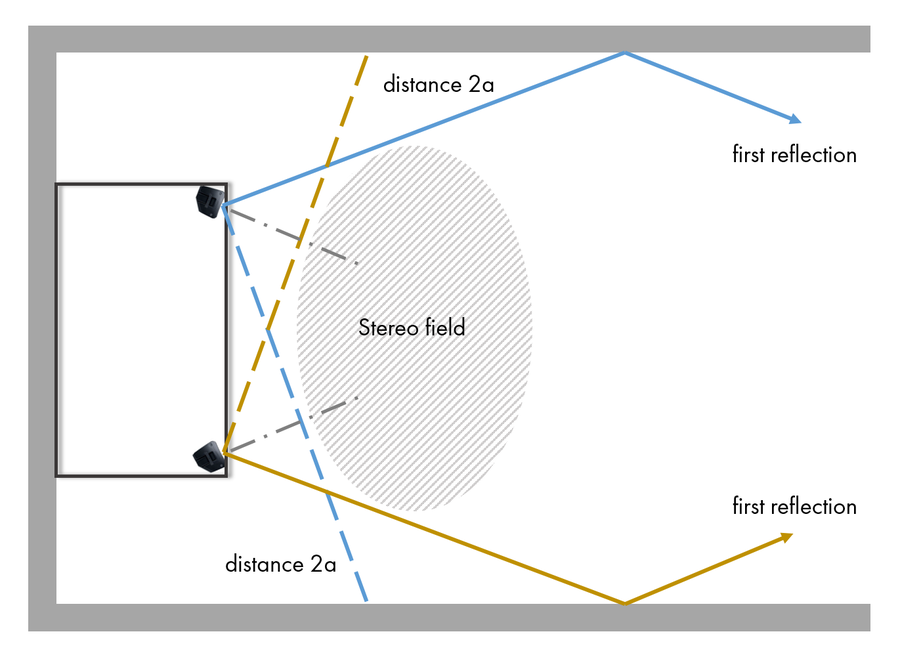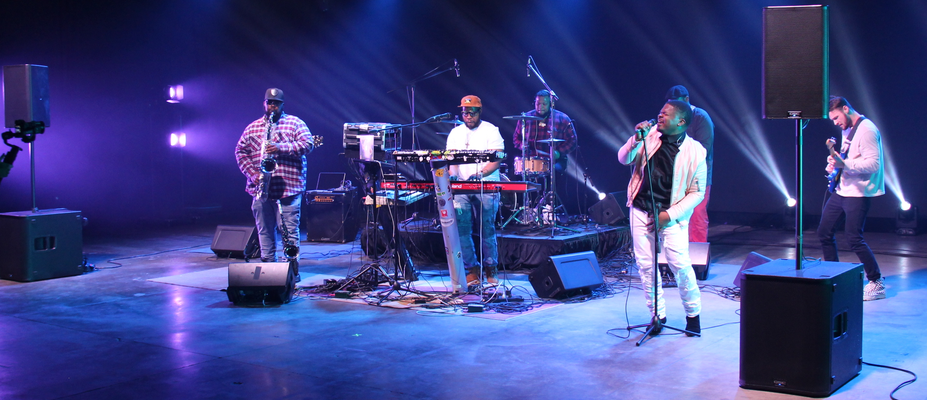Every venue has its own specific set of coverage challenges. For instance, a club with a low ceiling will never provide enough vertical space to fly a line array system, and in outdoor sound reinforcement, the absence of walls brings its own set of constraints.
Indoor Venues
There are two categories of indoor venues: those that were built with the acoustics of the rooms (with or without sound reinforcement) as the main criterion and everywhere else. Even in professionally run, live sound venues, the biggest challenge is to achieve the highest possible direct-to-reverberation ratio, without deafening the audience. Sound absorption is key for controlling reverberation to a manageable level, whether it is in the form of specifically designed acoustic absorption materials or plush furniture and thick curtains. Spreading out loudspeakers and using fills and balcony loudspeakers where necessary should take care of proper audience coverage.
In smaller venues with low ceilings, the combination of the direct sound from the stage, and the addition of a small central loudspeaker onstage to boost vocals for close audience members, as well as a pair of loudspeakers mounted on stands on either side of the stage will usually provide adequate coverage.
Outdoor Venues
Although too much reverberation can make sound muddy and unintelligible indoors, outdoor venues suffer from a lack of natural reverberation. While introducing reverb effects may fill out vocals and instruments that may otherwise sound anemic, it will not offer any improvement in sound coverage. The solution will be to choose loudspeakers with adequate horizontal and vertical coverage and rely on delayed side fills loudspeakers for greater coverage.
Loudspeaker Horizontal Coverage
The main consideration when planning correct horizontal loudspeaker coverage in a venue is how to cover the entire audience width, without overlapping so heavily that you create a hot spot(s) in the middle area. Remember that when two loudspeakers’ coverage overlap, the resulting sound pressure level will be 3 dB louder than in the area covered by a single loudspeaker.
Stereo or Mono?
If stereo reproduction may strike as a given in most applications, in live sound, stereo may not always be the most appropriate setup. In fact, there are two major reasons to consider running a PA system in mono.
First, depending on how the PA system is setup, the stereo experience may vary dramatically depending on where you are located in the venue. Instruments panned hard left or right in the mix will not translate properly with audience members sitting on the far sides of the room, contrary to what you could experience wearing stereo headphones.
Second, the more stereo-separation is created in the mix, the greater the risk of introducing phase issues throughout the venue. This can lead to a phenomenon called comb filtering, in which different frequency bands are noticeably boosted or cancelled depending on where you are in the venue (read further on Comb Filtering in the following blog – “What is Comb Filtering and how to avoid it”).
Optimizing Horizontal Coverage
In general, loudspeakers should always be placed in front of the stage or performance area, pointing away from performers and towards the audience to reduce the risk of feedback with microphones and instruments.
Let’s consider first a very common stereo setup where loudspeakers are positioned on either side of the stage, pointing straight forward to the audience area. The QSC K10.2 loudspeakers featured in this example have a 90 degree coverage (-6 dB), a relatively common pattern.

As one can see, several compromises arise from this arrangement.
- There is a substantial area in front of the loudspeakers where their coverage does not overlap, meaning that only one loudspeaker will be heard in quite a large part of the listening area. For some listeners this will distract attention from the performance by giving the impression that the sound is coming from one loudspeaker, rather than from the performer. In addition, any stereophonic effects (panning, reverb, etc.) for the audience at the front of the venue will suffer.
- The area, which benefits from a proper stereo field is away from the stage and fairly restricted.
- Direct reflections from nearby sidewalls (distance a) affect the listening area which benefits from a stereo reproduction. This is increasing the overall level of reflected sounds, adding unwanted coloration, blurring sound source localization and reducing intelligibility.

By angling the loudspeakers inwards slightly (in this case by 25 degrees), the disadvantageous effects are greatly reduced.
- The loudspeakers’ coverage (90 degrees) overlaps over a much wider area, and much closer to the stage, allowing the audience near to the stage to benefit from stereo reproduction as well (given that the time difference between the incoming left and right sounds is smaller than 35 ms).
- The stereo field is not only wider, but extends smoothly towards the rear of the venue. Most of the audience gets effective coverage from both loudspeakers. Note, also, that in off-center listening positions an audience member would be on-axis to the further loudspeaker, and off-axis to the nearer one. This means that each loudspeaker will appear similar in level in most listening positions (where, in the first diagram, the nearer loudspeaker would be louder).
- The distance between each loudspeaker and both sidewalls’ reflections is much greater (left and right distances have now doubled to 2a, compared to the first diagram). First, it means that sidewalls’ reflections are weaker and appear more balanced, which translates to a more stable sound stage imaging. Second, the ratio between loudspeaker’s direct sound and early reflections is much greater, reducing the overall level of room reverberation, as well as minimizing the audience area likely to be affected by such reflections.
In real life, the cut-off is not as abrupt as the above diagrams suggest, but the overall effects are still quite noticeable. The optimum inward angle obviously depends on the size and shape of the room, as well as the coverage pattern of the loudspeakers used. The goal is always to try to keep reflected sounds to a minimum.
Conclusion
Having considered loudspeakers’ radiation spaces and back wall cancellation phenomenon in Part 1, basic room acoustics variables, the ‘critical distance’ and the ‘inverse square law’ in Part 2, and detailed horizontal loudspeaker coverage in Part 3, the last article in this series will focus specifically on vertical loudspeaker coverage and conclude this series. Stay tuned!

Good info, in some large venues I place 1 or 2 K10 or K12 speakers in the monitor position facing the audience on stage to feel in that dead spot, usually at a low volume, via one of my aux outputs.